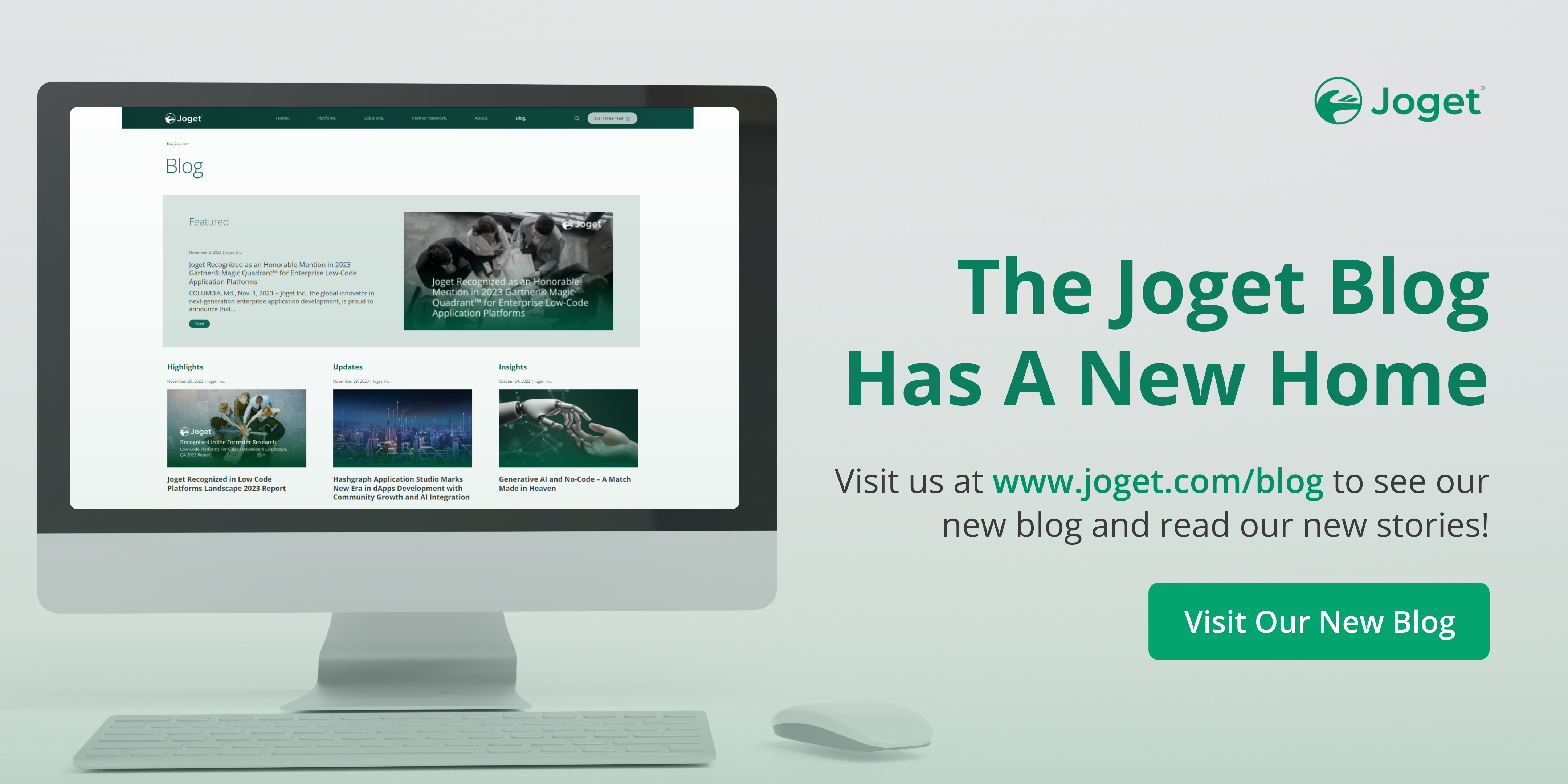Introducing Joget DX, the Next Generation Open Source Digital Transformation Platform
Joget DX is a next generation open source application platform for faster, simpler digital transformation (DX). With Joget DX business and technical teams can collaborate to rapidly build full-fledged enterprise applications visually, anywhere, anytime. Some history: The Joget platform started as the open source Joget Workflow project on SourceForge in 2009. Initially a workflow engine for business process automation, Joget evolved into a full-fledged application development platform in its third major release Joget Workflow v3 in 2011, back before the term “low code” was even coined by Forrester in 2014. With almost 200,000 open source downloads and more than 10,000 community members since inception, the latest major release Joget Workflow v6 was introduced in 2018 with focus on modern User Experience (UX), and App Maintainability and Performance. Joget DX is the next generation successor to Joget Workflow. From Workflow to Digital Transformation (DX), the product n...

.png)
.png)

